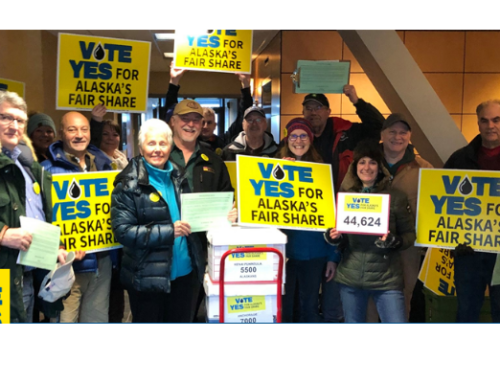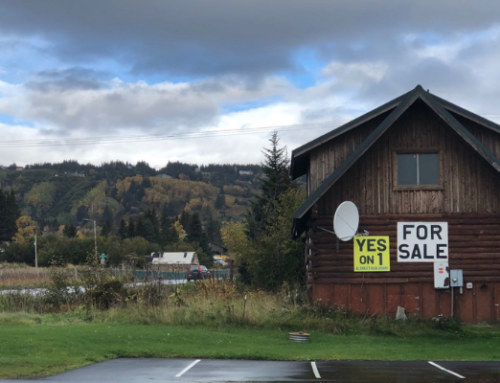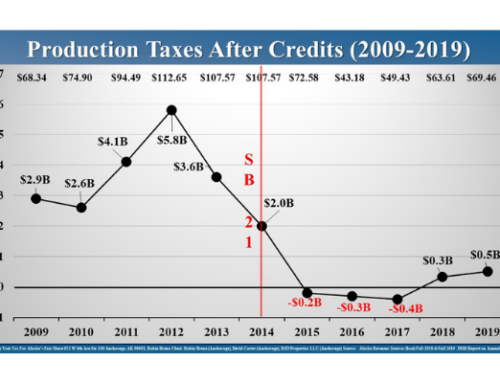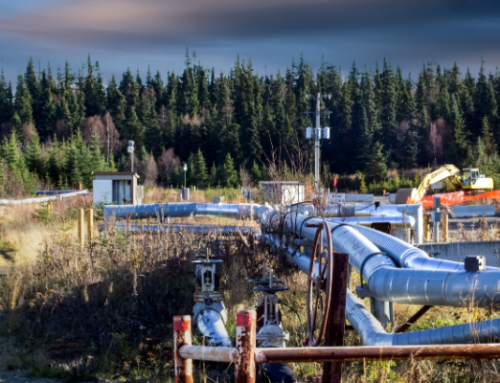by Les Gara
Gov. Mike Dunleavy has presented Alaskans with a false choice. He claims we have to pick between our seniors, schools, university, construction jobs — the state’s construction budget has been slashed during this self-inflicted deficit crisis — and economy, or a larger Permanent Fund dividend. This false choice ignores obvious solutions. We can sidestep his inaction through a voter-passed initiative.
The recently filed voter initiative to end unjustified oil company tax breaks, at a time Gov. Dunleavy is claiming self-inflicted poverty, makes sense. Needed, fair revenue and possibly a recall of a governor who said he doesn’t care that people are leaving Alaska are our only ways to protect what we value about our state in the short term.
It’s time people understood the hundreds of millions of dollars our current oil tax law is giving away every year and taking from our communities and neighbors. Policies that smartly encourage business are good. Ones that give away a publicly owned oil resource through unjustified tax breaks, when we are saddled with a crippling deficit, endanger Alaskans from the youngest to the eldest.
I refuse to go so far as some of my friends and say one action will balance the state’s budget. Fair oil revenue will help a huge amount. We don’t have to fall behind on education, senior support, medical coverage for the sick, alcoholism and drug addiction treatment needed to protect children and families, and basic state support for local communities. Fixing roughly $1 billion in oil revenue giveaways is a major, fair part of a plan to move this state forward again.
How weak is Alaska’s oil production tax? Here are a few measuring sticks.
ConocoPhillips is the only oil company required by federal law to reveal its Alaska profits. Other companies refuse to disclose them. Between 2016–2018, ConocoPhillips took in $3.6 billion in profit under Alaska’s generous tax breaks. That’s more profit than they earned anywhere else in the world.
In that same period, ConocoPhillips lost $2.8 billion in the Lower 48. All its Middle East and Asian operations combined created two-thirds less profits than ConocoPhillips earned in Alaska, and it earned half the profit in Canada of what it earns here.
When pushing for their 2013 oil tax breaks, oil companies pointed to the Lower 48, where they lost money and pay billions more in royalties to landowners (20%–25% royalty payments in much of the Lower 48, compared to 12.5% royalties on most fields in Alaska) as a model. We don’t have to sell Alaska to the lowest bidder to be competitive.
Here’s another measure.
A 2018 state study concluded Alaska’s tax breaks will result in negative oil production tax revenue for Alaska’s biggest oil producers in valuable oil regions like NPR-A — and for the same reasons, in places like the Arctic National Wildlife Refuge. The report explains that “negative Production Tax Revenues” on new fields are the result of rock-bottom oil tax rates and an expensive tax break. That break lets corporations avoid taxes by deducting their costs on newer producing fields from their tax payments on their other highly profitable fields. We’ll pay out more than we receive from these fields for roughly a decade.
To prevail, a good voter initiative needs to be written to avoid misleading corporate campaign ads claiming the initiative takes on too many issues. This initiative cleanly addresses the most glaring flaws in our oil tax laws and makes up for much of the revenue we lose to various excessive tax credits and breaks.
The initiative carefully applies only to the three largest, most profitable fields in Alaska. Long into the future, other profitable fields may be large enough to also pay this tax. It leaves the debate on smaller, potentially less profitable fields for the public and Legislature.
A fair 10% tax on the value of oil will be charged. Companies won’t be able to deduct their costs at other fields from the tax payments they owe on their highly profitable ones. Depending on the price of oil, this initiative would erase roughly $1 billion of our deficit. At higher prices, which bring higher corporate profits, the initiative lets us share in those profits with a slightly higher rate that tops out at 15%.
We don’t have to choose between supporting a vibrant state with quality schools, that treats seniors with dignity, and doesn’t harm rural and urban communities on one hand, or a PFD on the other. It’s time to end Alaska’s self-inflicted deficit. Gov. Dunleavy is wrong to use that as an irresponsible excuse to kill jobs and opportunity. If he won’t consider solutions that don’t harm people, the constitutional right to vote on an initiative allows us to do his job.





